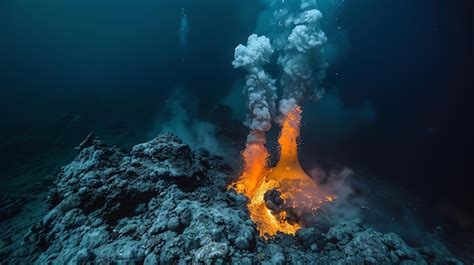The Woman in Black, a classic horror tale that has captivated audiences for decades, returned with a sequel, Woman in Black 2: Angel of Death. Set during World War II, 40 years after the events of the first film, this installment promises to deliver the same level of eerie suspense and terrifying encounters that fans of the original have come to expect. But does it live up to its predecessor’s haunting reputation?
The story follows Eve Parkins, a young and determined teacher who finds herself evacuating a group of students from the bomb-ravaged streets of London to the remote and isolated Eel Marsh House, the location of the original terror. Unbeknownst to Eve, her decision sets off a chain of events that awakens the vengeful spirit of the Woman in Black, once again drawing the innocent into her realm of unrelenting horror.
As the narrative unfolds, it becomes apparent that Woman in Black 2: Angel of Death struggles to recapture the chilling essence of the first film. The sequel’s reliance on jump scares and predictable plot twists detracts from the atmospheric tension that made its predecessor so compelling. Despite this, the film’s setting, using the backdrop of World War II, adds a layer of depth to the narrative, exploring themes of loss, grief, and the resilience of the human spirit.
Phoebe Fox, who plays Eve Parkins, brings a sense of vulnerability and determination to her character, making her a relatable protagonist. The supporting cast, including Jeremy Irvine as Harry Burnstow, a former RAF pilot, adds to the film’s emotional depth, although their characters are not as fully fleshed out as one might hope.
One of the most striking aspects of Woman in Black 2: Angel of Death is its visuals. The cinematography is hauntingly beautiful, capturing the desolate landscapes and rundown interiors of Eel Marsh House with a level of detail that immerses the viewer in the world of the film. The special effects, particularly in the portrayal of the Woman in Black, are equally impressive, enhancing the terrifying encounters without overwhelming the audience.
In conclusion, while Woman in Black 2: Angel of Death may not reach the same heights of horror perfection as its predecessor, it still offers a compelling, albeit flawed, viewing experience. Fans of the original will find moments of genuine terror and suspense, even if the film’s predictable nature somewhat diminishes its impact. For newcomers, the sequel serves as a decent introduction to the chilling world of the Woman in Black, although it is recommended to experience the first film to fully appreciate the depth of the narrative.
A Detailed Examination of the Plot
At its core, Woman in Black 2: Angel of Death is a story about the enduring power of grief and the unrelenting spirit of vengeance. The Woman in Black, a malevolent entity driven by the loss of her child, continues to haunt Eel Marsh House, seeking to claim the lives of the innocent in a twisted form of revenge. This theme is not only a nod to the original but also a reflection of the broader context of World War II, where loss and grief were omnipresent.
The introduction of Eve Parkins and her group of students adds a fresh dynamic to the story, exploring the psychological effects of trauma and the struggle to find hope in a time of despair. The character development, while not without its shortcomings, provides a human element to the film, making the terrifying encounters all the more impactful.
Themes and Symbolism
Woman in Black 2: Angel of Death is rich in themes and symbolism, weaving together elements of horror, drama, and historical fiction. The Woman in Black herself is a symbol of the destructive power of grief, a reminder that unresolved pain can lead to devastating consequences. The setting of Eel Marsh House, with its labyrinthine corridors and dark history, serves as a metaphor for the complexities of the human psyche, where fears and memories reside.
The use of World War II as a backdrop adds a layer of realism to the narrative, highlighting the idea that horror is not just about supernatural entities, but also about the atrocities that humans can inflict upon each other. This blend of psychological horror and historical context makes Woman in Black 2: Angel of Death a compelling, if imperfect, addition to the horror genre.
Comparison with the Original
Comparing Woman in Black 2: Angel of Death to its predecessor is inevitable. The first film, with its masterful pacing and atmospheric tension, set a high bar for horror movies. While the sequel attempts to emulate this success, it falls short in terms of originality and suspense. The reliance on predictable plot twists and an overabundance of jump scares detracts from the viewing experience, making it feel more like a generic horror film than a thoughtful sequel.
However, where Woman in Black 2: Angel of Death succeeds is in its expansion of the Woman in Black’s lore, delving deeper into the psychological effects of trauma and the lasting impact of loss. This thematic depth, combined with its visually stunning cinematography, makes the film worth watching, even if it does not entirely live up to the standard set by the original.
For fans of horror, Woman in Black 2: Angel of Death offers a unique blend of atmospheric tension and terrifying encounters, even if it does not reach the heights of its predecessor. The film's use of World War II as a backdrop adds a compelling layer of depth to the narrative, exploring themes of loss, grief, and resilience.
Future of the Franchise
The future of the Woman in Black franchise remains uncertain, with the reception of the sequel being mixed. However, the enduring appeal of the first film and the interest generated by the sequel suggest that there is still a market for stories centered around the vengeful spirit of the Woman in Black. Whether through further sequels, prequels, or even a reboot, the character’s potential for terror and suspense remains untapped, offering ample opportunities for future storytelling.
In the realm of horror, few characters have captured the imagination of audiences quite like the Woman in Black. Her legacy, from the pages of Susan Hill’s novel to the screens of cinemas worldwide, is a testament to the power of well-crafted horror stories. As the genre continues to evolve, incorporating new themes and technologies, the Woman in Black remains an iconic figure, capable of inspiring fear and fascination in equal measure.
Conclusion
Woman in Black 2: Angel of Death is a film that, while flawed, still manages to captivate with its haunting setting, engaging storyline, and the terrifying presence of the Woman in Black. It may not be as polished or suspenseful as its predecessor, but it offers a unique viewing experience that explores the depths of human grief and the unrelenting power of vengeance. For fans of horror and newcomers alike, the sequel is worth watching, not just as a continuation of the Woman in Black’s story, but as a standalone piece of horror cinema.
What is the setting of Woman in Black 2: Angel of Death?
+Woman in Black 2: Angel of Death is set during World War II, 40 years after the events of the first film, primarily in the remote and isolated Eel Marsh House.
Who plays the main character in Woman in Black 2: Angel of Death?
+Phoebe Fox plays Eve Parkins, the young and determined teacher who finds herself evacuating a group of students to Eel Marsh House, unknowingly awakening the vengeful spirit of the Woman in Black.
Is Woman in Black 2: Angel of Death as scary as the first film?
+While opinions may vary, Woman in Black 2: Angel of Death has its share of terrifying moments, although it relies more on jump scares and predictable plot twists compared to the atmospheric tension of the first film.
What themes does Woman in Black 2: Angel of Death explore?
+The film explores themes of loss, grief, and the resilience of the human spirit, set against the backdrop of World War II, highlighting the destructive power of unresolved pain and the importance of hope in times of despair.
Is the Woman in Black franchise likely to continue?
+The future of the Woman in Black franchise is uncertain, but the character's enduring appeal and the interest in horror stories about her suggest that there are opportunities for further sequels, prequels, or reboots, offering new avenues to explore the Woman in Black's terrifying world.
In the world of horror, few stories have managed to capture the essence of fear and suspense as effectively as the Woman in Black. With its haunting setting, well-developed characters, and the terrifying presence of its titular character, Woman in Black 2: Angel of Death contributes to the franchise’s legacy, even if it does not entirely live up to the standard set by the original. As the genre continues to evolve, the Woman in Black remains an iconic figure, ready to haunt audiences for generations to come.



